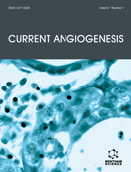Abstract
Histidine-rich glycoprotein (HRG) is a heparin-binding plasma protein that is produced specifically in the liver. It circulates in the plasma at high levels both as a free protein and in platelets. HRG has an unusual structure with a very high content of histidine and proline residues arranged in pentapeptide repeats. The histidine residues in the repeats bind divalent cations such as Zn2+, which is required for most if not all of the biological effects of HRG. HRG binds a number of molecules with high affinity, such as heparin/heparan sulfate, heparanase, plasminogen, fibrinogen, thrombospondin, immunoglobulin G, FcγRs and certain complement proteins. Due to its many binding partners, HRG has been implicated in the regulation of a range of biological processes including hemostasis, the immune response and pathological angiogenesis. The mechanisms whereby HRG exerts these effects are still unclear, but direct effects of HRG in vitro and ex vivo on endothelial cells and macrophages have been described. Even though there are candidates for potential receptors for HRG, the molecular mechanisms essential for HRG in vivo biology remain to be described. To identify the in vivo target cell and the mechanisms of HRG’s effect on this cell type is a prerequisite for the exploitation of HRG in clinical medicine, such as in cancer treatment.
Keywords: Angiogenesis, cancer, Histidine-rich glycoprotein, HRG, inflammation, tumor-associated macrophage, Endothelial Biology
 23
23

